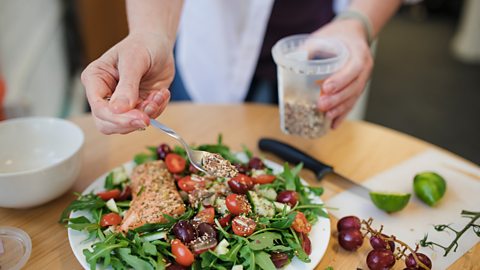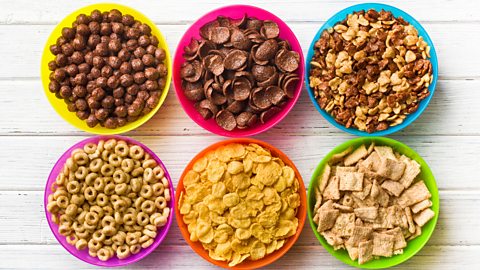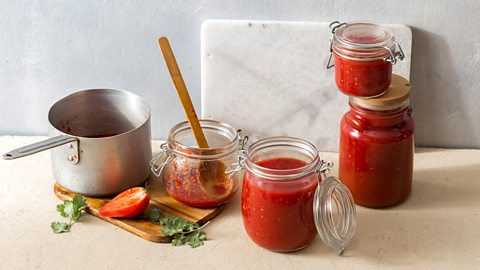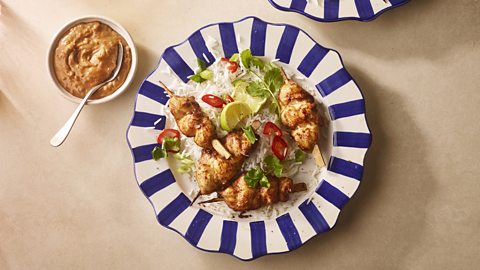The shopper’s guide to buying the best loaf of bread
From the best type to toast, to the most nutritious, what should you look for when buying bread?
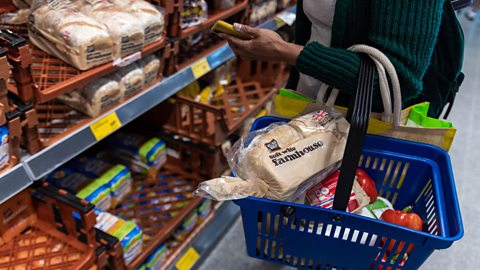
Used in cheese toasties , eggs and soldiers, salad with croutons and even desserts, bread is a versatile kitchen staple that we can't get enough of. In fact in the UK we spend more than a pound a week, per-person on bread.
However, with so much choice it can be difficult to know which loaf to buy. We asked the experts for their advice…
Look for a short list of ingredients
We’re frequently warned about the dangers of eating ultra-processed foods and if you’re buying sliced bread from your supermarket, most of the time it will be classified as a UPF. That’s because “they often contain additives and preservatives, as well as artificial colours, added during production,” says registered dietitian Reema Pillai.
“This can even be the case for some wholegrain breads available on the market. Ideally, we want to reduce our intake of UPFs, so if you eat bread often, it is worth considering looking at a better quality, less-processed bread.”
However, it’s important to not demonise bread say experts as they also frequently come with lots of nutrients. And it also doesn’t mean you’re your only options are to buy expensive artisan loaves. If you can, just look for options which have as few ingredients as possible.
“The shorter the ingredients list, the better. Typically, a good-quality wholemeal bread will contain wholemeal wheat flour, yeast and salt and typically nothing else, except some seeds,” explains Pillai.
Want to try making your own loaf? It doesn't come much easier than this Paul Hollywood white bread recipe
“Similarly, sourdough contains wheat flour, water and salt and perhaps rye flour. If possible, avoid breads that have added oils, sugars or syrups, preservatives, or artificial additives.”
Another option is to look at in-house bakery loaves that many larger supermarkets bake which are similarly priced to pre-sliced brands but have fewer preservatives (still check the ingredient list though). It’s also likely supermarkets will slice them for you.
“Even on a tight budget, you can buy good quality wholegrain breads with minimal ingredients,” says Pillai. “Make sure the first ingredient is whole grain or whole wheat flour… Look for a short ingredient list, without any added sugars, preservatives or additives.”
Check the fibre content
“A good quality bread can be a rich source of fibre, complex carbohydrates and B-Vitamins,” explains nutritionist Jenna Hope.
“Fibre plays a vital role in supporting optimal bowel movements and nourishing the beneficial bacteria in the gut. Additionally, both complex carbohydrates and B-Vitamins are pivotal in maintaining energy production.”
“Different types of breads are associated with different health benefits. For example, wholegrain bread with seeds will be higher in fibre and have healthier fats than white bread.
“Additionally, sourdough bread is fermented and should contain live bacteria which is beneficial for creating a healthy gut microbiome. It’s important to be careful though as ‘sourfaux’ breads are common these days, therefore look for sourdough breads with limited ingredients and traditional fermentation methods,” explains Hope.
“Always check the fibre content for the loaf,” adds Pillai. “Ideally, 100g of the bread should contain at least 6g fibre and even better if this is over 8g fibre per 100g.
“Looking at per 100g is helpful, as some bread slices will be thicker or thinner than others, so it can be hard to compare slice-for-slice. The higher fibre loaves are usually wholegrain breads with seeds added.”
“Rye breads and pumpernickel breads have a lower glycaemic index compared to white bread,” adds Pillai, “meaning it takes longer to digest and leads to a smaller rise in blood sugar levels. Look for one that includes ‘dark rye flour’ to ensure it is wholegrain. Other types of rye bread made from white rye flour or light rye flour, are not whole grains.”
While white bread isn’t regarded as the most nutritious it can still have its place says Hope. “White bread has fewer health benefits but can be useful as a pre-workout meal for those engaging in intense activity. Since white bread is lower in fibre, the carbohydrates are released far more quickly and can therefore provide a faster release of energy.”
If you’re buying a white loaf “some breads may use fortified flours, which are flours with extra nutrients added such as B vitamins and iron,” says Pillai.
Want to know more? BBC's Bitesize team have investigated the nutritional claims made about sandwiches.
Boiled egg with rye bread soldiers
Rye bread is a lower GI bread options and goes perfectly with boiled eggs
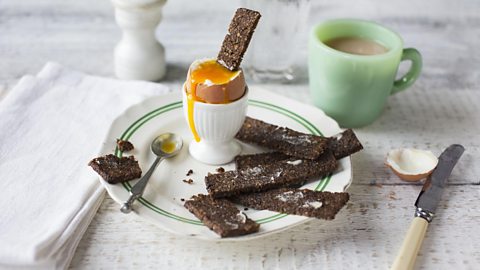
What’s the best bread for toasting?
“As a snack at any time of day, toast unites all taste buds. It's quick to make and easy to eat and the best bit has to be that everyone can choose their favourite topping,” says explains artisan baker Catherine Connor Cooper. However what option should you go for?
Pastry chef Neil Dunlop adds, “for toast, I would always go with a thick sliced white or brown. It’s also great to mix it up sometimes – you can’t beat a great toasted bagel or crumpet at the weekend!”
Cooper says to think about the practicalities, though – such as the size of your toaster. “A classic tin loaf is the perfect size for a toaster, fitting snug into it. Most seek a classic ground white which is great for the kids.”
However, if you’re thinking about topping your toast with more comprehensive toppings – such as meat, eggs, beans or veg, sourdough could be your best option.
“Garlic mushrooms on sourdough toast with spinach and tomatoes and a side of scrambled eggs, is my favourite bread-based dish. It’s a classic but nutritious and delicious,” says Hope.
Creamy garlic mushrooms on toast
Mushrooms on toast is a classic comfort dish and with the addition of bacon, crème fraîche and spring onions they're really taken up a notch

And the best bread for sandwiches?
This is just going to come down to personal preference say the experts.
“For me for me it all depends on the filling of the sandwich,” says Dunlop. “If you’re making a sandwich with wet filling such as pulled pork, I’d use a bread which is sturdier and soaks up the liquid while still providing support but for a basic ham sandwich I would use a soft white or brown sliced loaf.”
Use your slow cooker to create pulled pork. It's perfect sandwiched between the bread of your choice
However, for Cooper a seeded option appeals more. “You can’t beat a wholegrain. A malted barley or spelt loaf give stunning textures. The additions of linseed and millet often bring great eating textures when combined with the cheeses, cooked meats and the classic egg mayo. It's about giving as much importance to the loaf as you do the fillings. You need a slice, with a soft, light and chewable bite, flavours that enhance taking over.”
Originally published September 2024
